
Empowering one and all
POWERGRID
With a mission to inspire and nurture, Power Grid Corporation
of India Limited (POWERGRID), has been giving a boost to
development. From skilling farmers to providing livelihood means,
there is no stopping this powerhouse
With three decades as India’s central
power transmission entity, POWERGRID
acquired the status of Maharatna in October 2019. Established on
October 23, 1989, the Gurugram-based company is playing a significant
role in development of communities. The CSR interventions have transformed the
lives of many around its establishments. The company has community development
schemes related to health, education, drinking water, infrastructure such as
roads
and community centres and more.

a pearl millet farmer tends his harvest
With a three-pronged approach, POWERGRID has undertaken establishment of ‘Model Sites of Learning’ in Kudgi, Karnataka, and Kurnool, Andhra Pradesh. The farmer-centric programme is a five-year plan. It began in 2013-14 with the objectives of harnessing the potential of rainfed areas by adopting integrated water source management approach; enhancing water availability for diversifying livelihoods and capacity building training for farmers.
K.J. Praveen Kumar, Chief Manager-HR, Andhra
Pradesh, POWERGRID, says,
“Spread across 6,850 hectares, this project covers 10 villages under
Bethamcherla
Mandal in Kurnool district. The programme is in partnership with International
Crops Research Institute for the Semi-Arid Tropics (ICRISAT) and a NGO named
Rural Studies and Development.”
On the role of ICRISAT, Senior Scientific
Officer B. Nagaraju
explains, “Continuous knowledge-sharing has brought a
shift in the farmers’ mindsets. They now use the scientific
methods for cultivation and have seen an increase in yields
and profits. Even the wary ones have come forward. ICRISAT
provides modified seeds which are disease-resistant and need
less water. The project has been extended for another year and
registered an increase of 10-30 per cent in the yield, impacting
20,000 farmers.” The NGO pays attention to the issues that the
villagers face, says C. Vijayadu, the man behind Rural Studies
and Development.
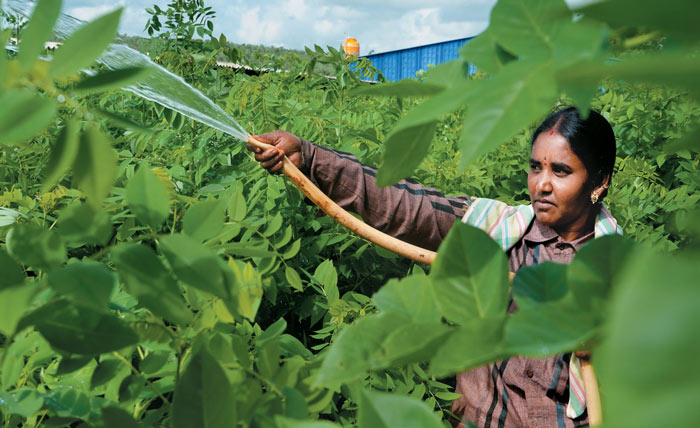
A woman staffer watering plants at the ICRISAT plot, Bugganapalli village
To stop soil erosion, ICRISAT recommended big percolation
tanks or rainwater harvesting tanks, Loose Boulder Structures
(LBS), Rock Filled Dams (RFD) and Small Farm Ponds. These
transformed the landscape, as flora and fauna flourish now. All
the 10 villages have 130-140 ponds with cemented boundaries.
Another 40 farm ponds are proposed. Water troughs for cattle
and vermi-compost pits have also been built.
The village Muddavaram got
its first bund in 2017. The
structure prevented erosion of top soil during rains and
flooding of the farms in the neighbourhood. Residents Ramesh,
Elaswamy, Maddya Naidu, G. Ramesh and Nagasheshalu,
happily, say, “This has solved the summer irrigation crisis as
almost 500 acres get this water in dry months too. The ground
water level has increased and we don’t need deep borewells.
The cattle also have drinking water now.” The neighbouring
villages too have requested for such water bodies. The gram
panchayat is looking at starting pisciculture.
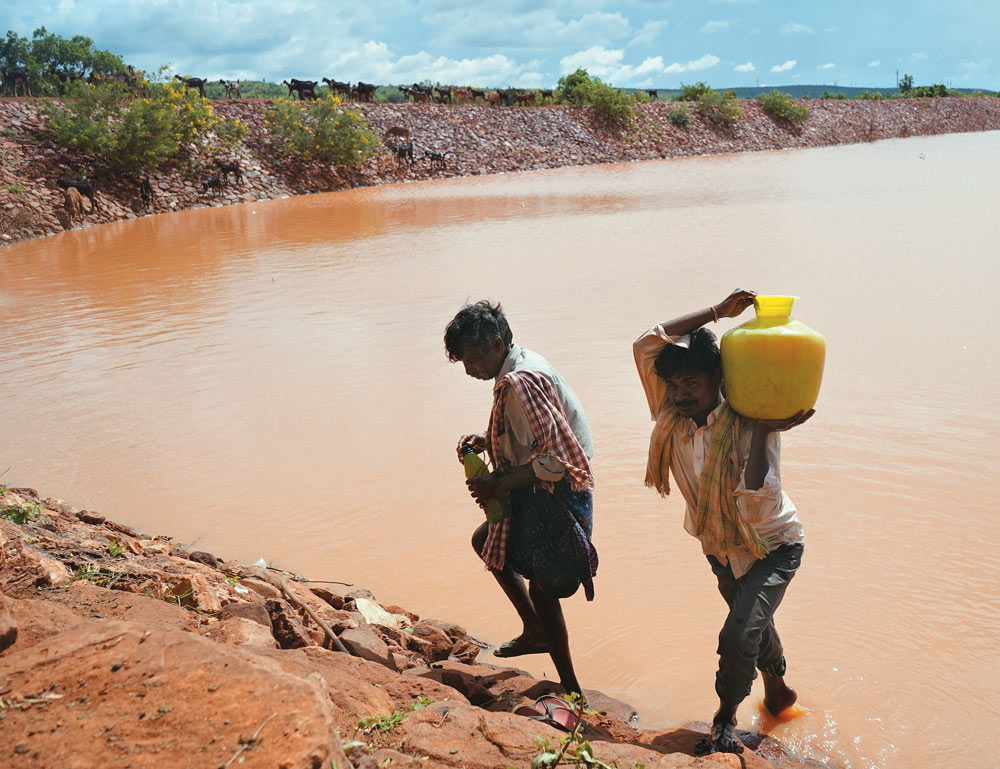
Shepherds collect water from the large rain harvesting pond in Marrikunta village
G. Chinnamadaya, a farmer in the same village, now
cultivates onion, pigeon pea and vegetables using seeds
provided by ICRISAT. He was even given a farm pond.
“Around 10 labourers work on daily wages for Rs 200. During
the harvesting season, the wages go up to Rs 300 per day,” he
says.
Vikram Yadav, Chinnamadaya’s son, who is doing his
graduation from the open university, says that the bund has
helped increase the soil’s moisture content and the water table,
which makes digging borewells easier and less expensive.
The village has more stories. The colourful bylanes lead to the home of 46-year-old Padmavati. Treasurer with a SHG, she has been earning Rs 3,000-4,000 per month, thanks to the photocopy machine provided by POWERGRID. “My income increases during exam and admission times,” smiles the homely lady, who was left a widow early in life. Other SHGs have been given goats and are collectively earning Rs 30,000 per month.
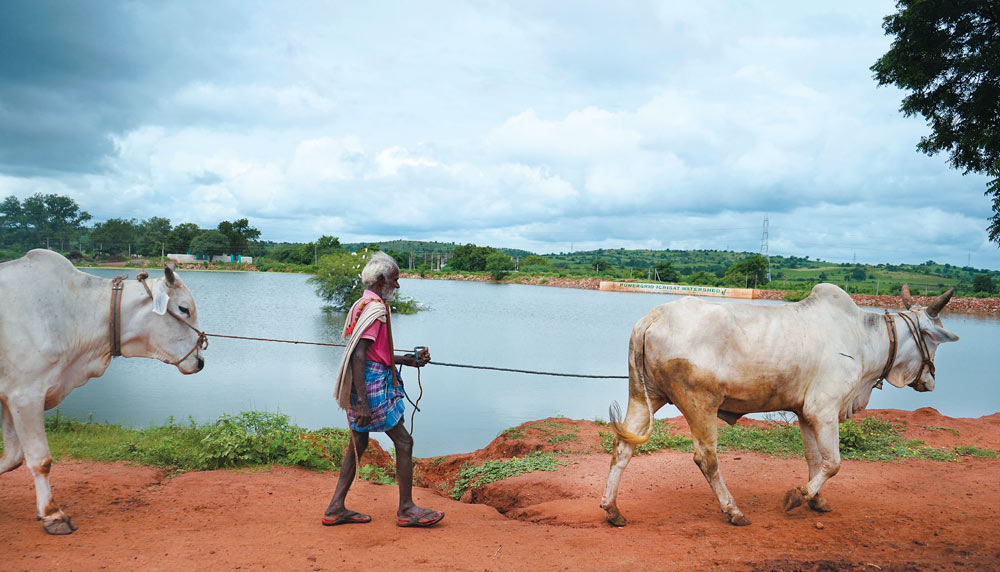
Nagalaxmi, with a small farm, has nurtured a kitchen garden in the vacant plot around her humble home. She grows brinjal, lady’s fingers, spinach, beans. “The produce suffices for household needs and the excess is sold. The seeds have been provided by ICRISAT and I shall soon be growing more vegetables and fruits.”
With a medium farm holding of seven acres, Peddanand owns a mango orchard, cultivates pigeon pea and groundnut and grows vegetables around his farm pond now.
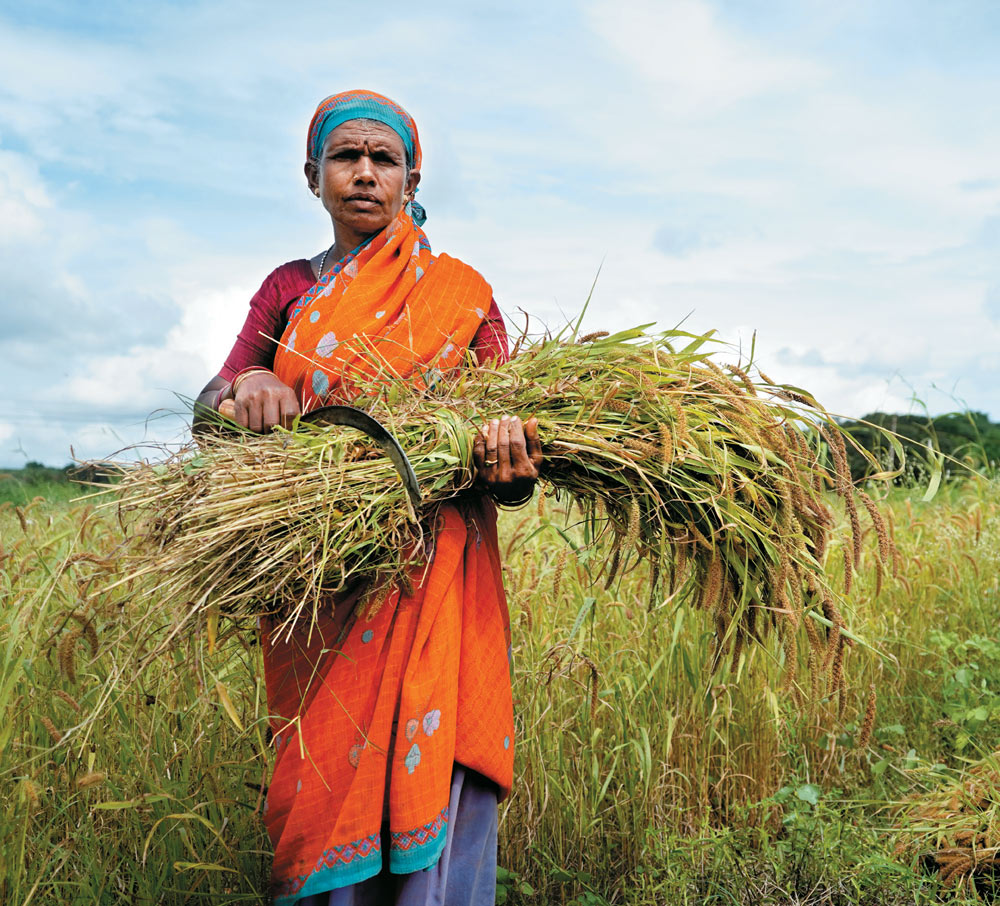
Each village in the area has seen a radical change. Green fields stretch over the rolling hills in the region around Bugganapalli village. ICRISAT has a nursery here, on a plot provided by the Department of Forest. Nitrogen-rich Gliricidia sepium trees and pigeon pea are grown here, and given free of cost to the villagers. Ramadu has allowed the firm to build a RFD on a portion of his land. A community water pit, LBS and RFD have been built to solve the farmer’s water problems.
There are 22 farm ponds in the village of Venkatigiri. Here, foxtail millets are grown in plenty. The neighbouring Marikuntta Village has a huge rainwater harvesting pond around which Gliricidia plants are seen.
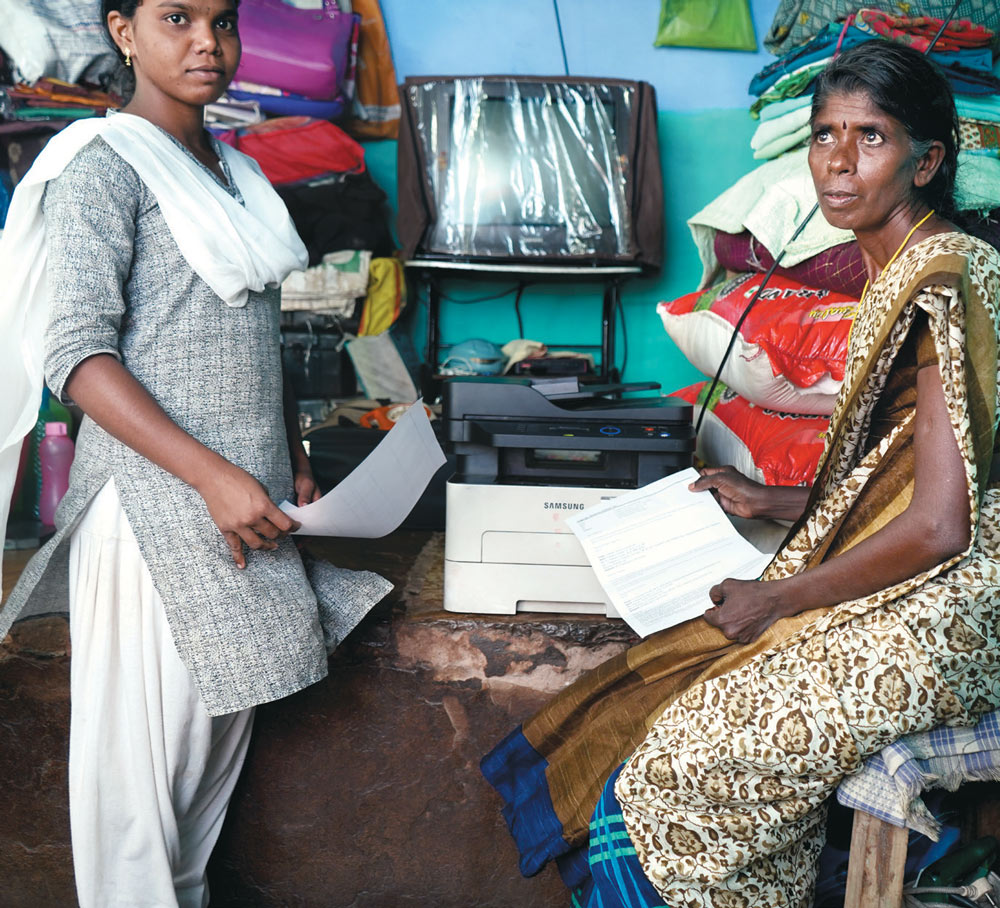
The first bund was built in 2015 in Veeraipalli village, adjacent to V. Giddiah’s land. He owns teak and other tree plantations around the bund, where water fowls swim. Mohan Reddy has a landholding of seven acres on which he has teak plantation, mango orchard, a LBS and rainwater harvesting facility. He says, “These structures have increased the fertility of my farmland and there is water the year through.”
Sumalatha’s dream of a comfortable life has come true since
she got a sewing machine under SHG support. The daily wager
began tailoring three years back. “My earnings have grown
to Rs 300 per day. On festive occasions, it’s even better, as
everyone wants good clothes.”
POWERGRID established a water treatment
plant and vermicompost
pit in Pendekal. Life in the easy-going village, which
has a Dal Mill machine, is abuzz during harvest season. Plants
that absorb toxins from water are planted in and around the
treatment plant, and the treated water is reused for irrigation.
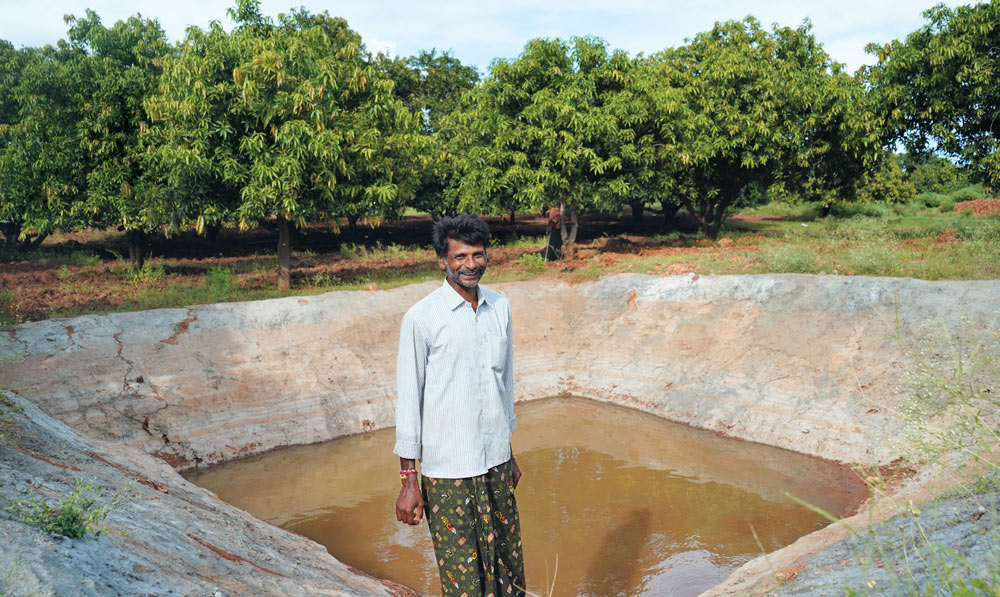
In Kurnool, six capacity building programmes were conducted during 2015-16. There has been land development of 10 SC farmers with convergence of MGNREGS. In Kudgi, the free soil analysis and fertiliser recommendations have been done. Two check dams, five farm ponds, three bore well recharge and two sunken pits have been constructed.
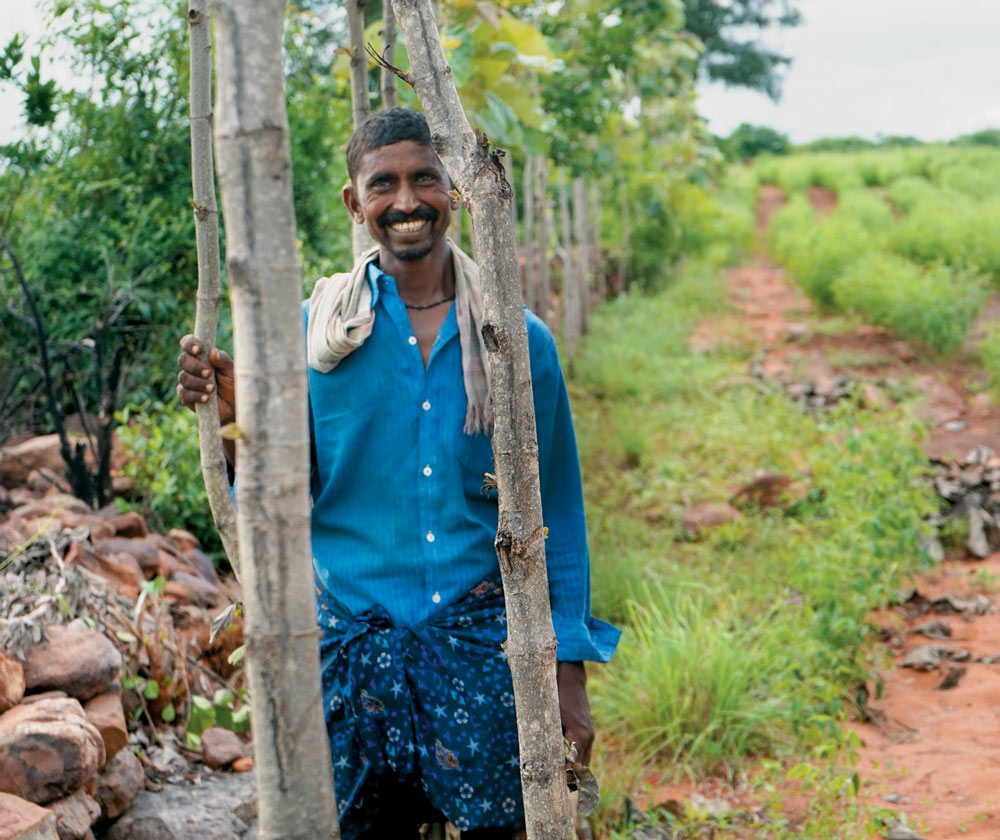
Samarthya means enabling and POWERGRID is enabling the lives of differently-abled children at this school. The state-ofthe- art building is barrier-free. The school-cum-hostel campus is for special children belonging to nearby regions in district Rajnandgaon, Chhattisgarh.
The new school has been constructed at a cost of Rs 3.26 cr. The six paintings of inspirational people, donated by eminent artist Bhim Singh, make for a wondrous entrance. Among these is actor Sudha Chandran and other inspiring people who overcame physical disabilities to become achievers.
Dr Maneesha Pandey, a special educator who recently took over the reins as Superintendent, says that even though the sanction is for 50 seats, the new facility has space for 96 students. “We have six girls and 48 boys from seven districts here. Each child’s development is charted. Every quarter, the progress is assessed as per the checklist provided by NIPED, Secunderabad, Andhra Pradesh. Primary I is for children in the age group of 7-10 years,” says Dr Pandey. There is a Primary II for older children.
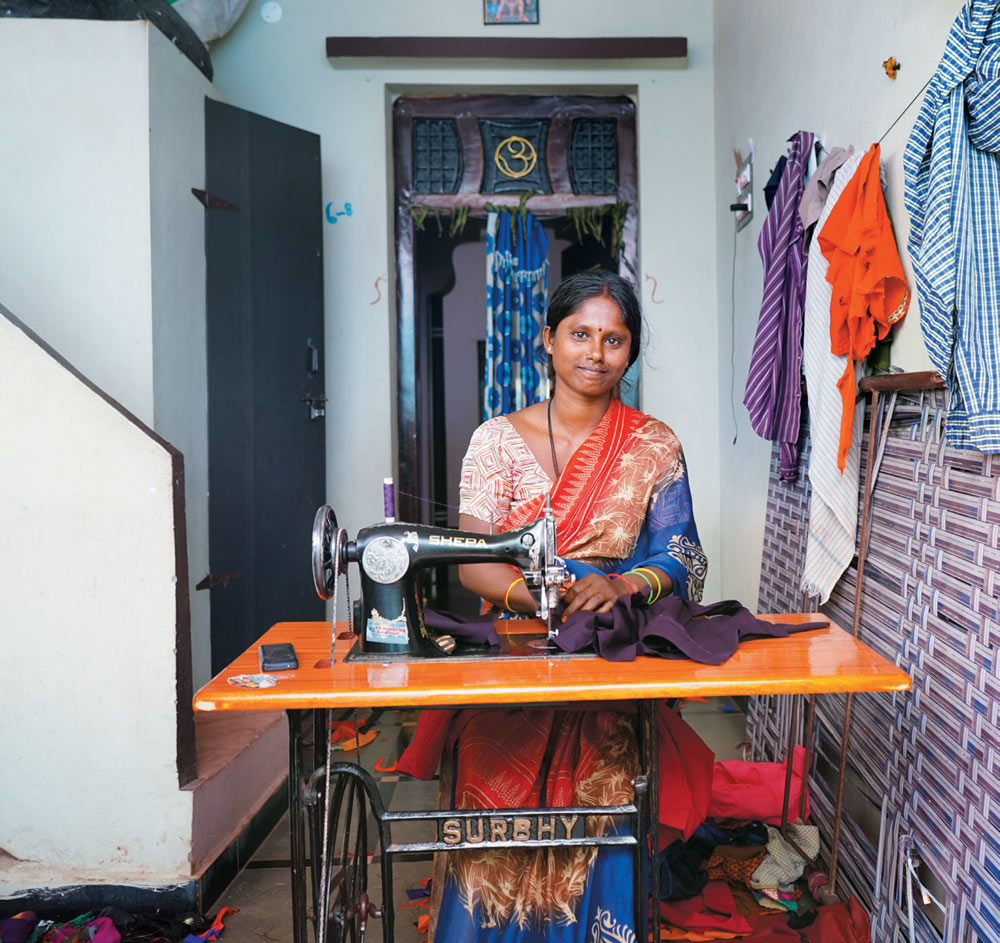
One can see the due care that has been taken, keeping in mind the physical challenges of its residents—the corridors have guiding and directional tiles running as tactile indicators. A sturdy steel railing runs along the walls. Braille plates are affixed outside each room to help students trace their destination. The institution has eight spacious classrooms and labs for occupational therapy, physiotherapy, speech therapy and group hearing.
Five workshops, OPD, audiometry room, computer room, conference rooms, library, rehabilitation rooms, eight wellkept dormitories, a staff room, a large and neat dining hall, separate toilets for boys and girls make it a premier institution for the handicapped.
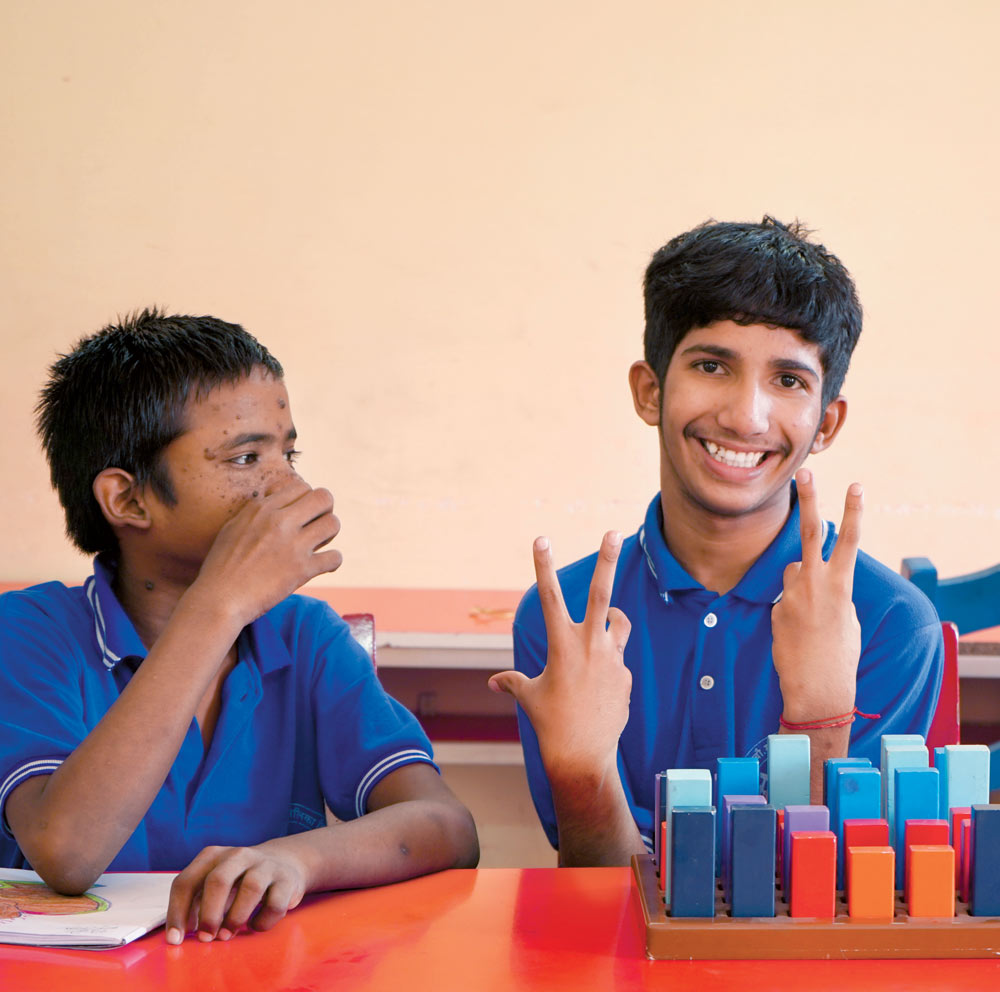
Shiv Shanker Pandey, vocational instructor, informs that there are 13 posts for vocational instructors. The teacherstudent ratio is 1:8, enabling one-to-one interaction with the students. Depending on the time of the year, Mahender Sowani helps the children draw colourful festive drawings. Gajendra draws a beautiful peacock. Payal Marai, a tribal, rehearsed for a dance item presented on World Disability Day. A sportsperson, Omprakash plays kabbadi and cricket, while Laxman exhibits Powergrid leadership qualities. For impromptu guests, the children are always willing to dance and show their talents. And they live on in their world, undisturbed by the sounds that prevail outside.
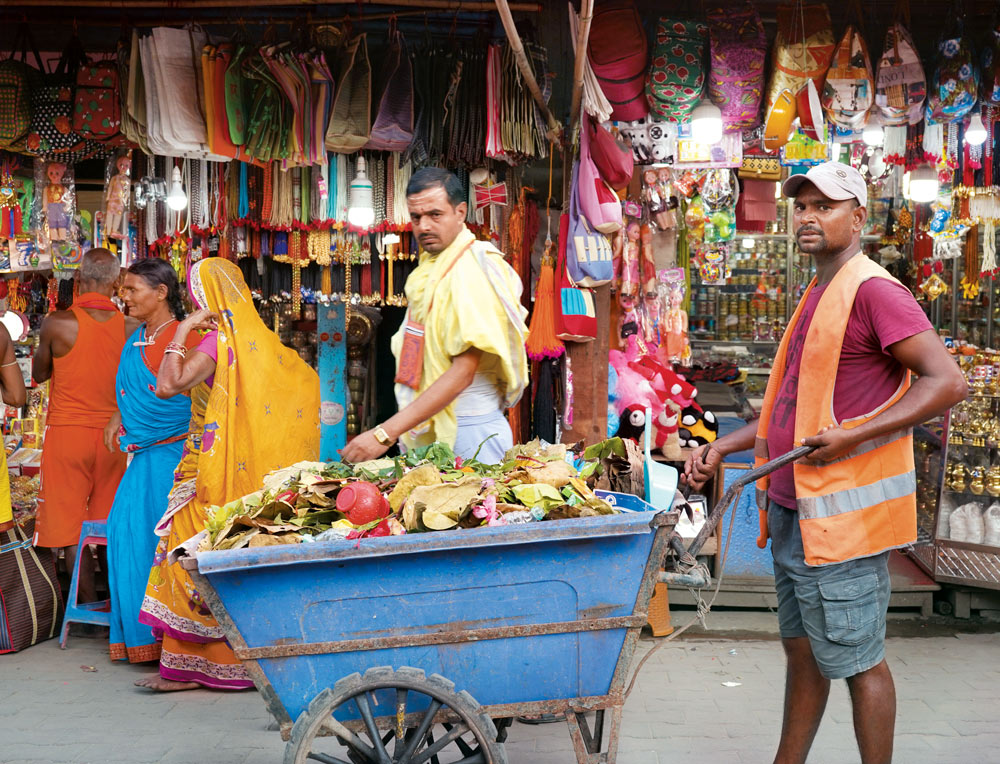
POWERGRID safai karamchari carting waste for segregation and shredding in Deogarh
The clean pilgrim town, Baba Dham, has twice been the recipient of ‘Swachh Iconic Award’ from the central government under the ‘Swachh Bharat Abhiyan’. But this wasn’t the case till 2017. Deogarh or Baba Dham, as it is popularly known locally in Jharkhand and Bihar, was fraught with hygiene issues. The temple waste was dumped on the roadside, exposing people to severe health hazards and accidents.
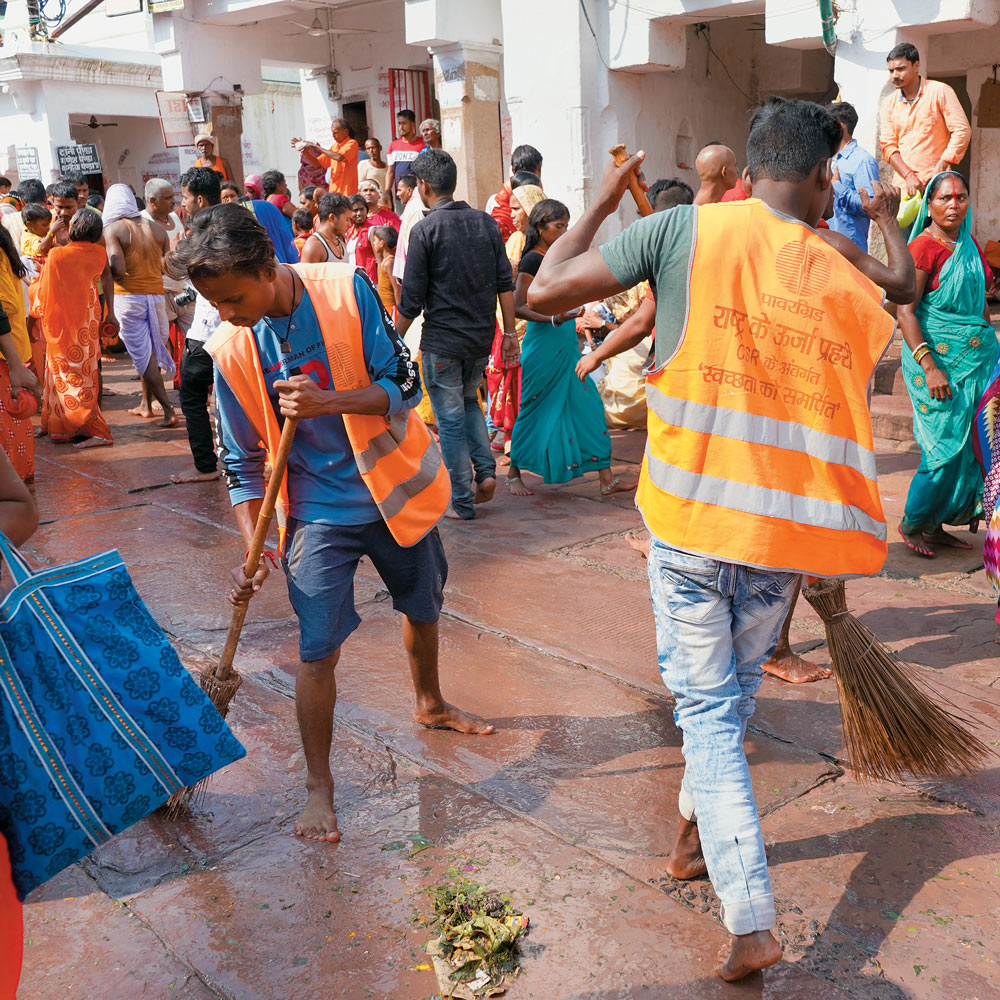
Clean drives continue throughout the day at Baba Dham
In November 2017, POWERGRID joined hands with the local administration to clean up this filth and the temple premises. The task was given to a Delhi-based NGO, Akanksha Enterprise. The NGO has also taken up a sanitation drive in the famous Vaishno Devi Temple, Katra. They had to clean the Ganga Sagar lake too, which is used for a dip by the devotees.
The company spends Rs 10 lakh every month on this project. Workers, in two batches, clean the premises regularly and carry the temple waste for segregation and processing at the site closeby. Two compost machines for non-plastic waste and two shredders for plastic waste have been established.
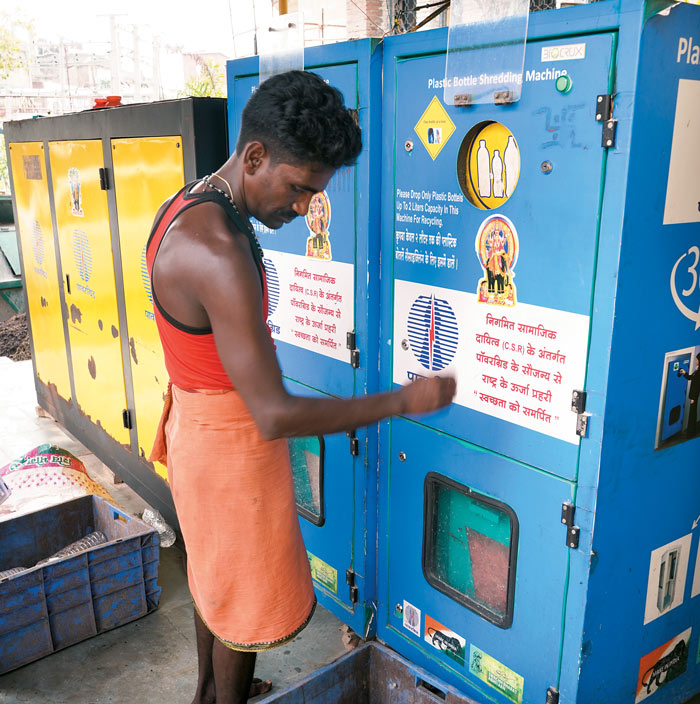
Worker shredding plastic waste in the shredder at Deogarh
The green organic compost is taken by Krishi Vigyan Kendra. And Bio Crux, whose machines are used for shredding, buys back the plastic refuse for use in road construction. Posters on cleanliness have been put at vantage points in the temple premises and vicinity. These keep the people aware that cleanliness is godliness.
“POWERGRID also renovated the VIP foot over bridge leading
into the temple and five water coolers have been installed,”
says Jagrat Sharma, Associate Engineer, on deputation at
POWERGRID. Resolving the stampede crisis during aarti and
shringar in the evening, the PSU has installed two LED screens.
Devotees can now see this in peace, even from far.
Five mast lights have
been erected around Ganga Sagar
Lake that keep it well lit. And POWERGRID is considering a
beautification drive in the vicinity of the lake with the support
of local administration. The three-year project is a model for
keeping all pilgrimage places clean.
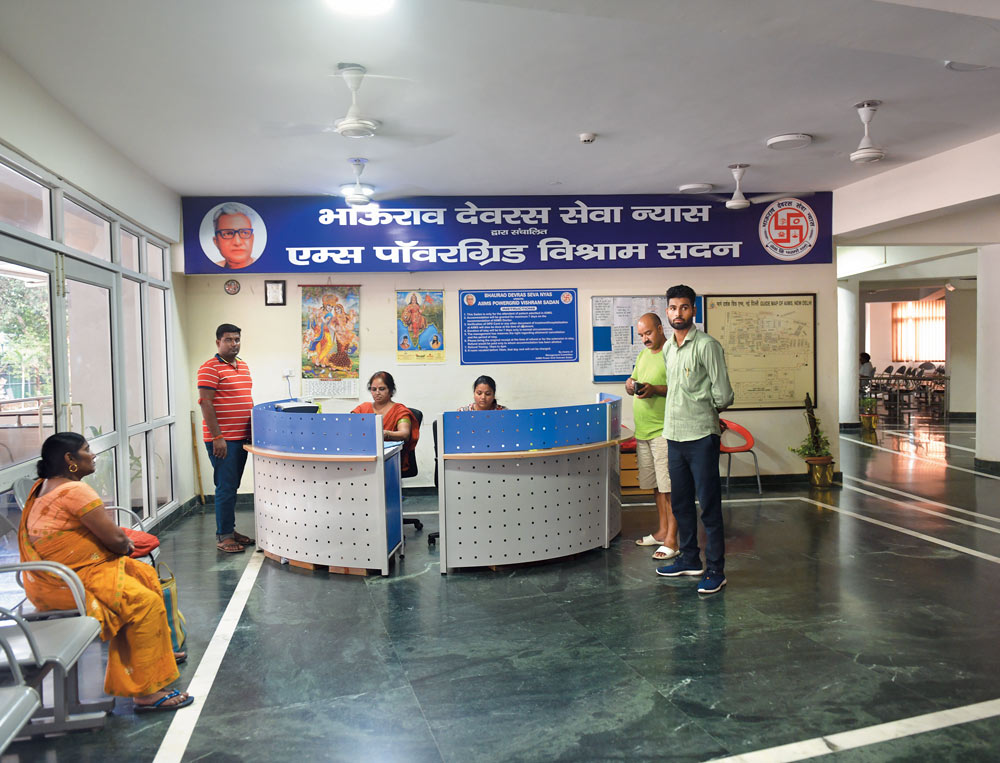
With 325 beds and a nominal cost,the Vishram Sadan at AIIMS has become a haven for patients
The All India Institute of Medical Sciences (AIIMS) is the
one hospital that every Indian visits for treatment of serious
illnesses and diseases. Giving relief and shelter to the ailing
and their harried kith and kin is the 10-storeyed, 325-bedded
POWERGRID Vishram Sadan, located just minutes away from
the hospital. Pramod Kumar, Manager, informs, “The building
was constructed at a cost of Rs 34 crore. It is managed by the
25-year-old charitable trust Bhao Rao Deoras Sava Nyas. There
is a helipad on the roof too.”
There are 81 rooms from 1st-7th floors with seven single
beds, 14 double beds, 21 three beds and the rest are dormitories.
Every room opens out to let in plenty of sunlight, enabling cross
ventilation. The maximum number of days that a family can stay
is 14 days. “In severe cases, if the patient needs further checkups,
they can rent the room on the doctor’s recommendation,”
says Kumar.
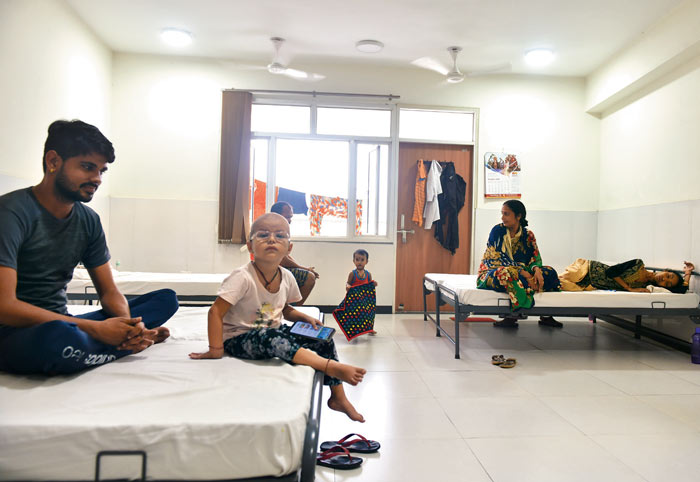
With 325 beds and a nominal cost,the Vishram Sadan at AIIMS has become a haven for patients
The room charges are nominal: Rs 150 for single room, Rs 300 for dormitory and Rs 380 for a three-bedded room for the first week. The tariff increases marginally in the second week.“People come from every corner of the country but the most number of patients come from Bihar, UP, MP, Jharkhand, Rajasthan and Assam. We have 100 per cent occupancy,” says Kumar.
There is a modern kitchen and cafeteria, a small general store and stationery-cum-photocopy kiosk in the basement. The dining hall has a seating capacity for 92 at one time. The breakfast costs a nominal Rs 10, lunch is a buffet spread priced at Rs 25 and dinner is priced at Rs 20. Morning and evening tea with biscuits is free.
Among the many patients who have found relief on physical
stress and expenditure is Mohammed Ashraf from Kashmir,
who has a malignancy in the pancreas. He says, “We save time
and money on transport as there is a shuttle service that plies
to AIIMS. It’s a great relief.”
Many more patients and their families have
benefited with this initiative. Jayanti Sai from Mau, Uttar Pradesh, says, “I
have been operated twice for brain tumour at AIIMS. Seeing
my plight, my doctor advised me to shift to this place. This has
eased cost of stay, food and local travel, for which I was earlier
paying a hefty sum in private hotels.”
From Madhubani, Bihar, Pavitri Devi is
undergoing treatment for breast cancer at AIIMS. She says, “The staff
here ensures that cleanliness is maintained in the dormitory
as it is necessary to prevent any infection. Everything is well well organised
and we get good food.” Kumar informs, “The Sadan
is not even two years old and we are adding more facilities. We
have a lounge-cum-library. A TV has been donated by Punjab
National Bank.” Patients and attendants sit on chairs in the
broad semi-circular verandah, as they wait their turn to go
home in sound health.
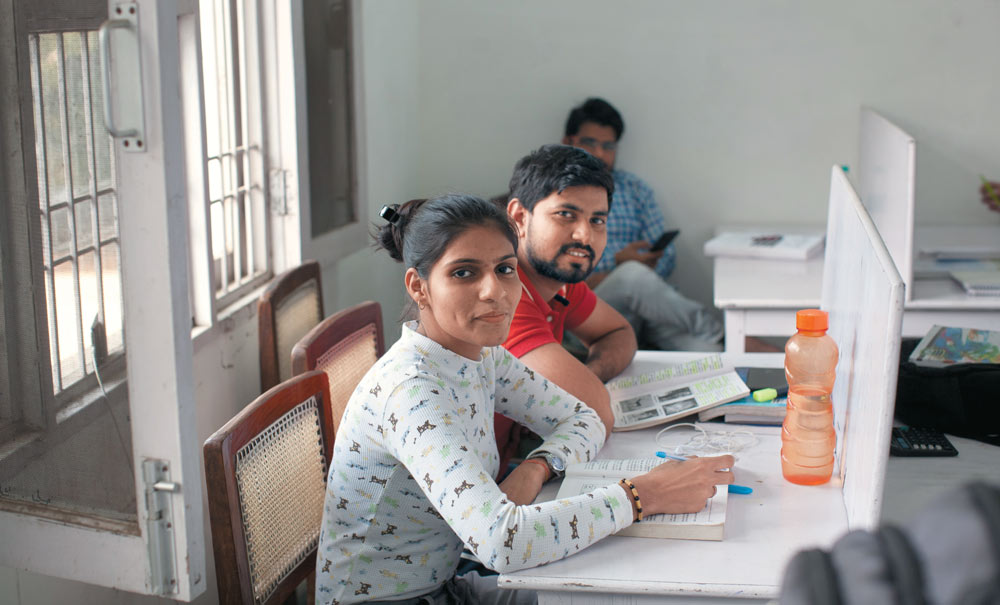
Students spend hours in the Gurugram library
Built at a cost of Rs 75 lakh, the new
building of Zila Pustakalaya Bhawan opened in July 2019. In collaboration
with the Haryana Advisory Board, this renovated district library is a
landmark
community facility in Civil Lines, Gurugram, Haryana. The
foundation for this was laid in 1972. And 45 years later, this is a
reader’s haven.
The librarian, Khub Ram Yadav, says, “This modern
library
comes as a boon for the youth. We have to give facilities to the
children to study in peace and compete well. This library does
just that.”
The library has a stock of 60,000 books, out of which 7,000 have been contributed by POWERGRID. The library subscribes to 12 newspapers, that is seven Hindi and five English dailies. The two-storey building houses books on relatively every subject. A member is allowed to issue a book for 15 days. There are six computers.
There are comfortable and plush chairs which make reading a joy. There is a spacious reading space and even a water cooler has been kept. While some come to enjoy their daily news, others are busy studying for competitive exams. On an average, 250 people use the facility daily. Twenty-one-year-old Neetu is a resident of Pataudi. She says, “I am living in a PG at Jharsa and preparing for the Combined Graduate Level Test. I have been coming to this library for a month. There are many reference books here. I can study peacefully here.”
One of the oldest visitors to the library, Vivek, a diploma holder in mechanical engineering from Rewari, lives in Gurugram. He shares, “I have been coming here for the last 14 years and it is like a second home to me. I am preparing for competitive entrance exams in railways. I find it easy to study here.”
Anupriya from Kaithal did her M. Tech from Kurukshetra University. “For the last three months I have been coming here daily. This has a good ambience and I can prepare for NET exams peacefully.”
Along the walls of the hall are seating spaces with plug points for digital access to study material. Jitendra Kumar and Radhey Shyam are marine engineers who come here to prepare for their departmental exams. Says Jitendra, “For two months we sail and then there is a 45-day break. This is the period when we use the facility to prepare for our exams and look forward to a promotion.” Radhey Shyam adds, “I am a member of this library since 2009, and I get a good place to surf for information online.” The boys bring their own laptops.
The word about district library has spread to quite a distance. Students from neighbouring districts are frequent users. Rohit Yadav has a master’s degree in Physics. “I belong to Rewari and my friends recommended this library when they came to know that I was moving to Gurugram to prepare for competitive exams.”
A science student from Manav Rachna Educational Institution, Vikas Lakhera says, “I am trying to get a government job for which I have to clear the entrance test. My friends suggested this library as an ideal place to study.”
Satish Kumar, librarian at the Government College for Girls in Gurugram, makes it a point to drop in as often as he can. “I was the librarian here for six months in 2014, so it gives me immense joy to see the transformation. It has become a landmark in town and the student community is benefiting from this.”
Dr Mohit Yadav
District Hospital, Gurugram
The good doctor has found a peaceful place to study at the district
library.
"Since I want to specialise in
paediatrics, I started coming
to this place. It is conducive
to pursue preparations for
entrance exams in my field of
interest."
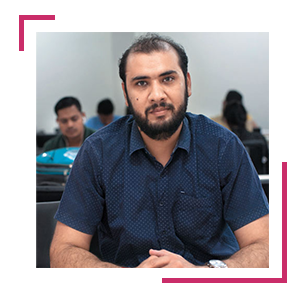
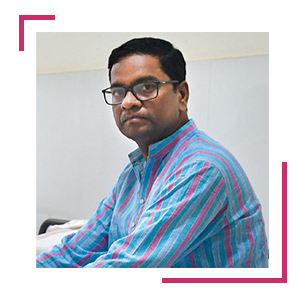
Dr Manoj Kumar
Government hospital, Katihar
Vishram Sadan, AIIMS, is a good
place for patients and attendants.
"My wife, Priya Singh, has been
operated for brain tumour. We
had to make several trips to Delhi,
as her treatment was going on at
AIIMS. My doctor friends suggested
that I try this new Sadan."
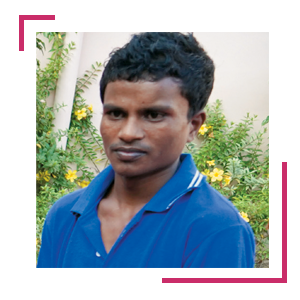
Laxman, student
Samarthya, Rajnandgaon
A place for the special ones,
this school has changed the
lives of many young people.
"I make dal, rice, roti and
sabzi under the mid-day meal
scheme and earn Rs 1,200
every month."
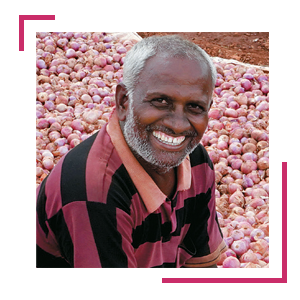
G. Chinnamadaya, farmer
Muddavarm village, Kurnool district
A new pond and good seeds have
changed his life for the better.
"The farm pond has water in
summer too. Even my neighbouring
farmers use this. The water is also
pumped to the farms at the higher
levels. Vegetables are grown around
and close to the pond."
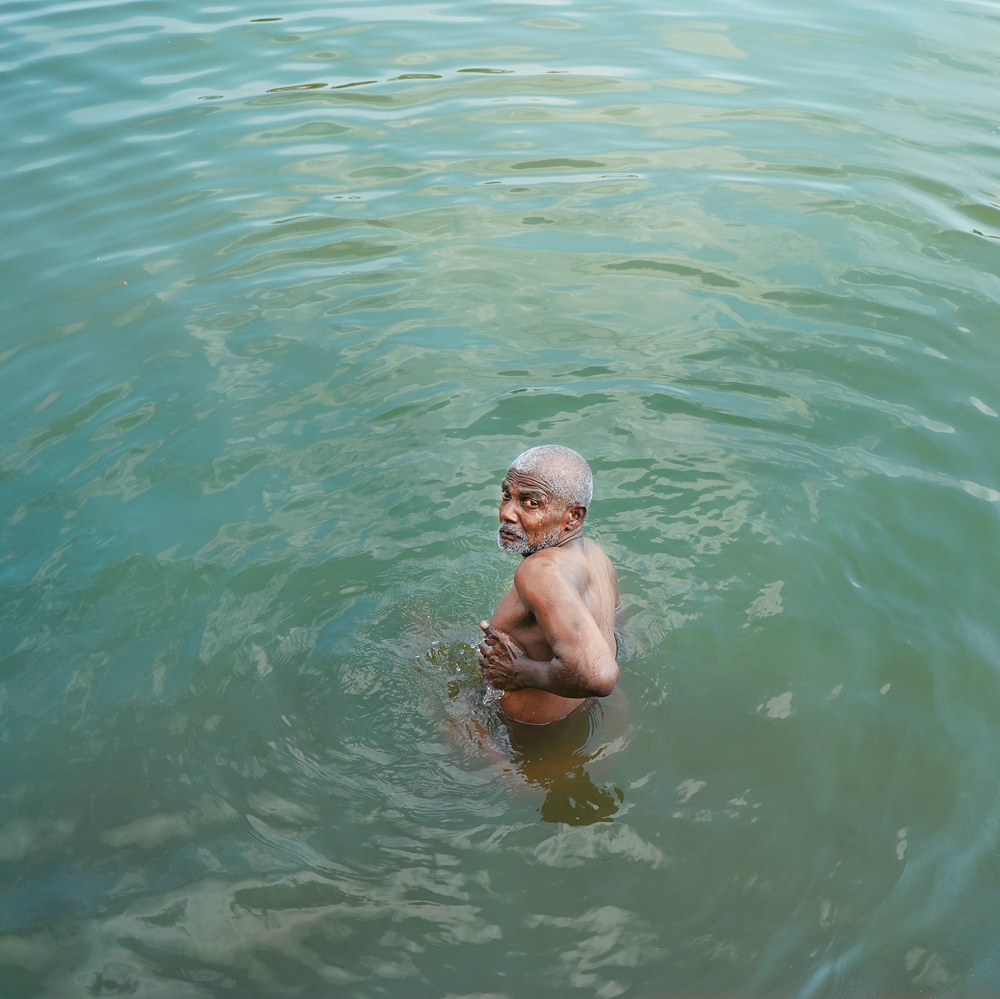
A devotee taking a dip in the Shiv Ganga Lake, Deogarh
The road to empowerment goes pan-India and through different programmes. In a village of Angul District, Odisha, the PSU constructed community centres, open shed, roads, culverts, drains, classrooms in schools, established a drinking water system, developed ponds.
Skill development training was imparted to 5,000 youths through National Skill Development Corporation (NSDC) across 33 locations. Under this, 360 youths were trained at Indo- Danish Tool Rooms at Jamshedpur (Jharkhand) and Patna (Bihar). Around 125 villagers near POWERGRID's substation of Gujarat and Madhya Pradesh were given training in CNC Turning and Milling, condensed course in tool and die-making, certificate course in Fitter Trade and Welding Technology.A short-term vocational training programme was organised for 560 underprivileged and unemployed youth in association with CIPET. Around 1,500 Persons with Disabilities (PwD)were trained through National Handicapped Finance and Development Corporation (NHFDC). And many more have been trained.
POWERGRID also holds regular health check-up camps at 94 locations. More than 25,000 persons have benefited from this. Investigations like hemoglobin, blood sugar, ECG, PFT, blood pressure, eye check-up are undertaken in the camps. Aids and appliances have been given to almost 2,500 disabled persons at nine locations through ALIMCO. In eight camps, aids and appliances were distributed to 1,751 people.
Under the Swachh Vidyalaya Abhiyaan, 9,437 toilets have been constructed in 4,244 schools. These have been built in government schools in 170 blocks in 23 districts in Andhra Pradesh, Assam, Bihar, Chhattisgarh, Madhya Pradesh, Odisha and Uttar Pradesh.
Scholarships have been given to 850 students of Assam and Manipur, who became orphans due to militancy/communal violence, through National Foundation for Communal Harmony (NFCH), Ministry of Home Affairs.
In Bihar and Jharkhand, 10,000 solar lanterns were distributed for school children to enable their studies.For keeping the planet green, POWERGRID planted 50,000 saplings at the Chirang Reserve Forest in association with Eco-Task Force of the Indian Army and the Bodoland Territorial Council.
The list of CSR initiatives is a long one and the road endless, as POWERGRID keeps giving more power to lives.




